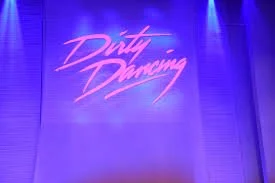Photo courtesy of Flickr
By Honora Quinn ’27
Staff Writer
In the years since its 1987 release, “Dirty Dancing” has taken over the world and made its way into the hearts of countless Mount Holyoke College students. Now, a new book released last spring is exploring the history behind the film and its legacy.
Andrea Warner’s book, “The Time of My Life: Dirty Dancing” delves into the film’s world beyond the fictional resort Kellerman’s to that of “Dirty Dancing” screenwriter Eleanor Bergstein and her vision, and how the film has impacted culture beyond the gates of the College.
Since 2013, a staple of new student orientation has been the annual screening of “Dirty Dancing” in the Gettell Amphitheater. But the film has always had ties to the campus community, starting as early as 1988. From the moment the audience learned from the iconic line that “Baby’s starting at Mount Holyoke in the Fall,” Baby became a part of the cultural history of the College and a perennial film staple.
“The Time of My Life: Dirty Dancing” is the 13th installment in ECW Press’ “Pop Classic Series”: short books that argue, dissect and investigate the cultural impact of various movies, TV shows, albums and even the “Teenage Mutant Ninja Turtles.” Warner is a Canadian music journalist, previously writing about artists like Buffy Sante-Marie, Celine Dion and Shania Twain, exploring the lives and legacies of change makers in the music industry.
“Dirty Dancing” appears, at first, to be an outlier in her bibliography. A short but sweet book dedicated to what seems to be just another teen dance movie, it seems a far cry from her previous coverage of some of the most influential female musicians of the 20th century. However, Warner delves into the iconic film with much honed care and her critic’s eye, seamlessly meshing her criticisms and accolades while sprinkling in her personal relationship with the film.
Her narrative is incorporated throughout but comes across most blatantly in the first chapters, beginning with how she first came across the film as a young girl. The story’s dance-related narrative prompted her to analyze her own love of dance, as well as the external pressures that made her feel that with her “fat-since-birth body,” dance was the last thing she should be doing. She related to the use of dance as a controversial and revolutionary medium, as shown through the actions of protagonists Baby and Johnny.
Warner spends a lot of time in her book on the film’s production, namely through writer Eleanor Bergstein. Bergstein is the reason Warner even has a movie to write about. She grew up vacationing at places like Kellerman’s. She was a dance champion in her own right, and was even called ‘Baby’ until she was in her early 20s. She is also the one who created the mixtape of iconic and eclectic music that features in the movie and would later become a best-selling hit.
This is a particular section in which Warner’s writing really shines, and her music journalism background becomes most apparent. In Chapter 3, she breaks down the music track by track, from The Ronettes’ “Be My Baby” to “(I’ve Had) The Time of My Life” by Bill Medley and Jennifer Warnes. She ranks, dissects and explains the role these songs play within the larger narrative. The movie is set in a very idealized version of the 1960s, but the score includes music all the way up to the mid-’80s. It’s contemporary and classic, the mixtape of Bergstien’s life in dance, and Warner enlightens readers on how this came together and why it works.
“The Time of My Life” is a love letter. It is a deep sea expedition. It is music journalism and a film history, and it changed the way I think about Baby carrying that watermelon up the stairs to her fate and future fortune.
Karishma Ramkarran ’27 contributed fact-checking.

